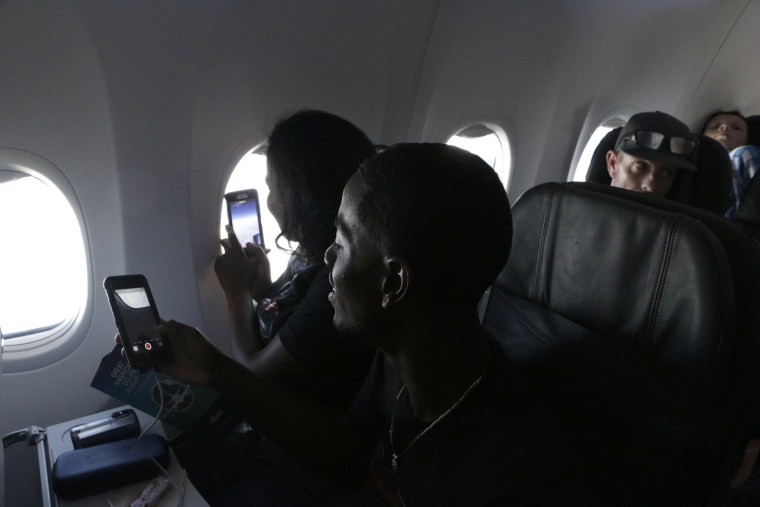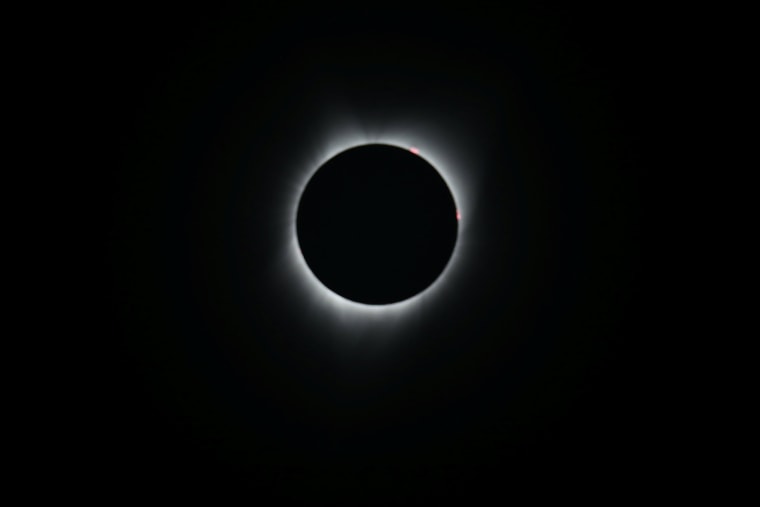ABOARD 'SOLAR ONE' ABOVE THE PACIFIC OCEAN — Scientists know how to party.
Fueled by strong coffee and blue- and green-frosted doughnuts, a small army of astrophysicists, astronomers and planetary scientists cheered and applauded as "Solar One" — a special Alaska Airlines flight — launched to give them the world's very first look at Monday's total solar eclipse.
In reality, they were strapped into a Boeing 737 that simply took off from Portland International Airport like any other jetliner. But "launched" was the word that Tanya Harrison — who is more at home with rockets than you are with your car — used reflexively.
Harrison, a Ph.D. and planetary scientist at Arizona State University, is a Very Respected Science Person. She has worked with NASA's Mars Reconnaissance Orbiter and Curiosity rover, and she's now working on the space agency's Opportunity and Mars 2020 rovers.
But Monday, decked out in a NASA T-shirt, she was sporting eclipse fingernails — black with a white swoosh, with glitter representing the sun's corona. ("I never do my nails," she said. But Sunday was her birthday, "so I decided to go all out.")
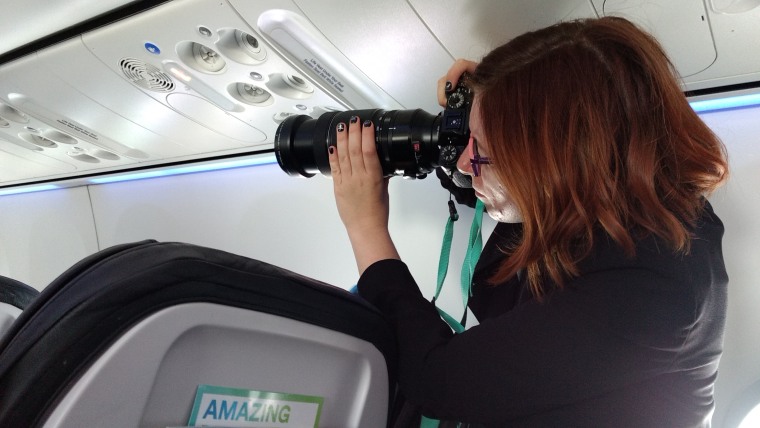
The dawn Alaska Airlines flight took scientists, journalists and a handful of online contest winners from Portland, Oregon, two hours out over the Pacific Ocean to intercept the eclipse before it reached North America.
Other than the three astronauts aboard the International Space Station, they were the first people to see it with their own eyes.
Related: Total Solar Eclipse Carves Its Path Across the U.S.
"I love this. Any chance I get, I grab an opportunity like this," said Michael Barratt, an aerospace physician and astronaut who flew on the final mission of the space shuttle Discovery in 2011. Pointing to Harrison and her ASU colleague Evgenya Shkolnik, an astrophysicist specializing in exoplanets and stars, he said: "The real rock stars are those who do the astronomy."
It was a flight months in the planning.
The shadow of the moon was moving at about 4,000 mph, while Solar One topped out at about one-eighth of that. So the plan was to approach the sun from the south and "side-swipe" the spectacle, said Brian Holm, Alaska Airlines' 737 fleet captain.
Thanks to some advanced, constantly adjusted calculations, the flight headed west over the ocean and then north to intercept the eclipse right on time.
"It's a pretty interesting math problem," Holm said.
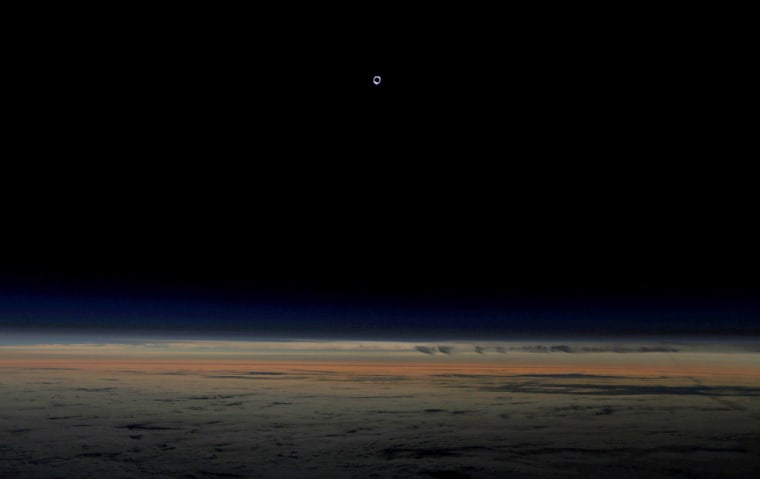
A few minutes before 10 a.m. PT (1 p.m. ET), the sun began disappearing, nibbled away by the cosmic Pac-Man that is the moon. At 9:55 a.m., it was dusk. At 9:56, the horizon started turning red, as though sunset were imminent. At 9:57, the sky turned blue and orange, and then gray. At 9:58, it was nighttime.
Totality — the moment when the moon completely covered the sun — arrived at 9:59 a.m. And night descended, along with silence. For one minute and 43 seconds, there was just a thin, blazing ring in the dark sky at lunchtime.
"It looks like the sun is being eaten," said Harrison. "I feel like we're on the surface of an alien planet."
"Wow. Wow," Shkolnik said.
Related: Spectacular Photos of the Eclipse Captured Across the Country
At totality, the corona — the ring of light circling the ravenous moon — looked eerily like a glittering diamond wedding band dancing in the night sky.
"What you're really taking in is hot plasma, so it is ionized gas — 'ionized' meaning that the elements there have had their electrons stripped off," Shkolnik said.
"And so you see hot gas flowing along magnetic field lines out into space. And along with the gas comes the high-energy particles," she said, "So it's, like, high-energy accelerated electrons and protons that are being spewed out into space, and that's what creates the solar wind that travels through space."
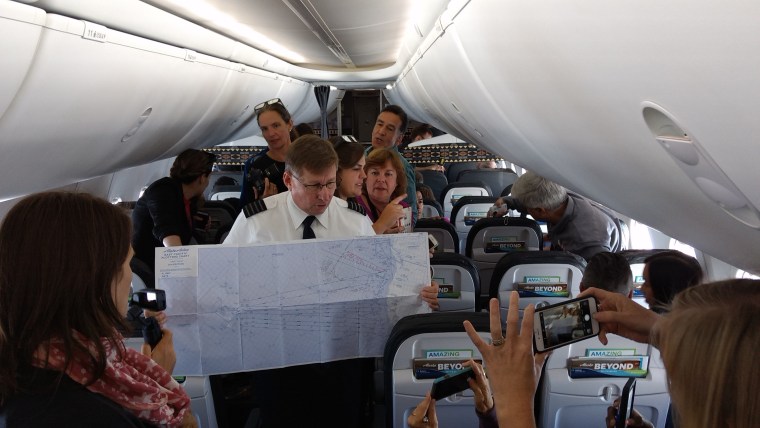
Harrison said that even though she knew exactly what to expect, "it's still shocking" to see the sun disappear.
"I thought we were floating above the surface of Saturn or something like that, with the sky turning yellow," she said.
Joe Rao, a meteorologist and an instructor at the Hayden Planetarium in New York, said that was no surprise. As "nature begins turning out the lights," he said, "there's a certain built-in primal fear of sorts."
PHOTOS: Americans Look to the Skies (With Glasses!) for Solar Eclipse
It was the 12th total solar eclipse for Rao (pronounce RAY-o). The 11th was last year, when he persuaded Alaska Airlines to delay Flight 870 from Alaska to Hawaii so he and other eclipse chasers could witness it over the Pacific. That adventure is what inspired the airline to charter Monday's dedicated flight.
For Barratt, the astronaut, it was only the second total eclipse.
"It really rocks to be here," he said. "This whole universe we live in is full of amazing."
